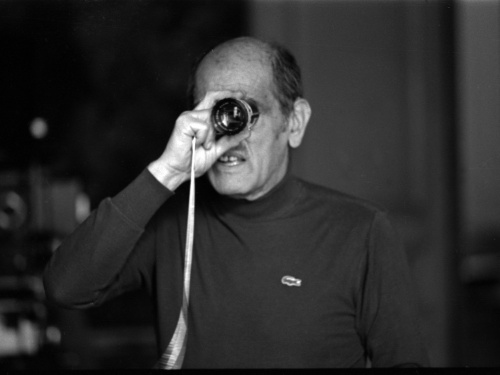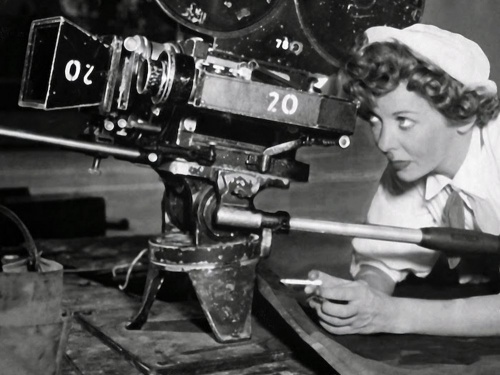Anatomy of a Scene: The Salt of the Earth
© Sebastião SALGADO / Amazonas images
The first in a regular series exploring a key title from the ICA’s film programme through analysis of one central scene, this article by Will Guy examines the motivations behind an experimental interview format devised by Wim Wenders for Sebastião Salgado biopic The Salt of the Earth. Co-directed by the artist’s son, Juliano Ribeiro Salgado, the Oscar-nominated documentary won the Un Certain Regard Special Prize at Cannes for its unprecedented exploration of the Brazilian photographer’s career.
Sebastião Salgado’s name not only summons up images, but invites reflection. The essence of his work lies beyond the surface of the expressive black and white photographs that he is known for; it is held within the weighty significance of their subjects. Salgado’s devotion to capturing the most momentous events of our time—those we instinctively shy away from—has led many to declare him the most important photographer working today. As such, The Salt of the Earth must do justice to far more than a man.
© Sebastião SALGADO / Amazonas images
One half of the directorial duo, Juliano Salgado’s motivation is a son’s desire to understand the quests that his absent father prioritised over his childhood; deeply personal drives that fix upon an almost mythical figure. Wim Wenders, however, came to the photographer through an image (above) that now hangs above his desk. It is this mixture of one director’s intimate connection to the man and the other’s deep interest in his work that blends into a balanced partnership capable of more than the conventional biopic. As a result, The Salt of the Earth spans several modes of production. Originally comprising footage shot by Juliano on his first trips to accompany his father, these raw and personal images are then extended and developed by the intercutting of interviews shot by Wenders.
We might envision Sebastião Salgado and Wim Wenders sitting at a desk, discussing the finer points of a productive photographic career, and indeed, the filmmakers begin here. This conventional interview format shifts the focus away from the artist to the exchange; the dialogue forms between two men sitting at a table – far from the inhospitable environments that Salgado’s work centres upon.
Sebastiaõ Salgado and Wim Wenders, The Salt of the Earth, 2014. Courtesy of Donata Wenders.
Juliano is first to admit, “these interviews were dull and didn’t really work, because Sebastião was very self-aware and didn’t feel comfortable.” However, Wenders is accustomed to finding the most fitting form of moving image through which to explore an artist’s accomplishments; experimental documentary forms thread through his heart-wrenching record of Nicholas Ray’s final days in Lighting Over Water to the most recent Pina. The fundamental drives behind Salgado’s work may only be coaxed out by similarly tailored methods.
“Wim had this amazing idea to bring Sebastião into a sound-studio and place him within backdrops so that he was completely isolated from the team. This was very powerful, because Wim didn’t interview Sebastião, who was able to abstract each image and enter into them.” Juliano Salgado
This quick change in tack delivers the dialogue we seek; the initial spark that ties the photographer to the subject at the moment they trigger the shutter. So fitting is the technique deployed by these filmmakers that we might not notice the subtle genius of the scene: Salgado sits in complete darkness, his photographs projected onto a one-way mirror in front of him through which a camera films his reactions in tight close-up - appropriating the autocue technology employed by newsreaders. Behind the mirror sits Wenders, quietly governing the images that confront the photographer. Listening to Salgado’s free discussion of each image, we follow his stream of consciousness as it circles each photograph.
Sebastiaõ Salgado and Wim Wenders, The Salt of the Earth, 2014.
“Through the use of this method, Sebastião stopped talking about how difficult it was to get the photo, and instead talks about the people and the stories, and you’re there in that moment, reliving it as a very real cinematic experience in which you’re able to understand Sebastião’s subjectivity. It’s a complementary hallucinatory situation.” Juliano Salgado
Sitting in the black box of the cinema, we share his relationship to each image; a form of engagement that connects the photographer to his subject without interference, allowing him to rekindle the unconscious processes that occurred at the decisive moment of the photo’s creation.
When we think of the recent spate of photographer’s biopics, be they pre- or post-mortem, we find that they remain tied to personality. Yet, The Salt of the Earth offers something larger, closer to the essential purpose behind Salgado’s work: a fittingly photographic approach that expands our engagement with the imagery rather than forcing it to compete with Salgado’s mythic status. In doing so, we progress beyond his fame and comprehend the impulses that govern the path of his eyes. What more can such a film aspire to? ■
There is a special preview screening of The Salt of the Earth on 14 July.
Please note that the Juliano Salgado quotes in this article are from a Q&A at Curzon Chelsea on 22 May 2015.
This article is posted in: Articles, Blog, Events, Film
Tagged with: The Salt of the Earth, Anatomy of a Scene, Will Guy, Sebastiao Salgado, Wim Wenders, Juliano Salgado


Donata%20Wenders/index.jpg)





